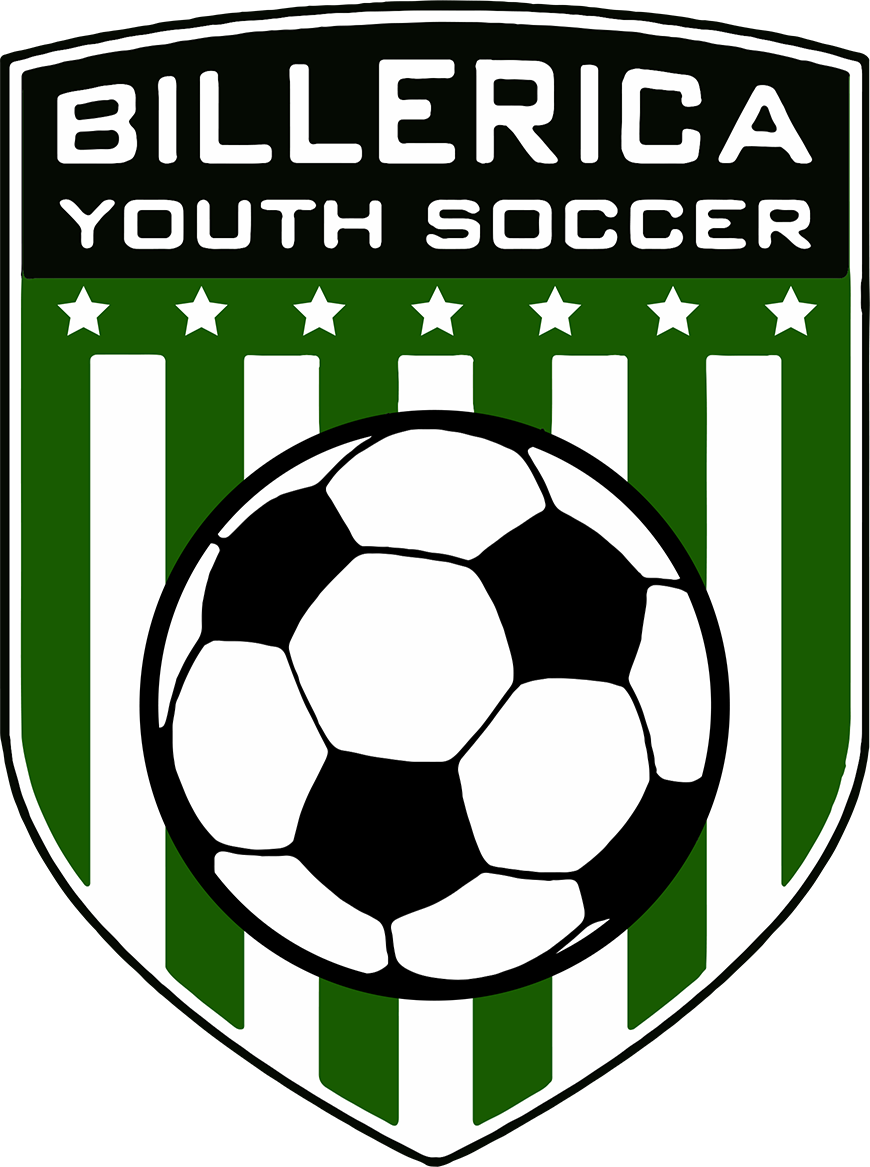The Laws of the game
The rules (technically referred to as The Laws of the Game) are broken up into 17 areas, or Laws. What follows is only a summary of the most important points - for a full reading of the Laws, refer to the FIFA Laws of the Game website. Additionally, BYSA uses some modified rules for youth play as set forth by Middlesex Youth Soccer that may differ from the FIFA laws.
These modifications include:
No heading of the ball until U14. If a player heads, or attempts to head a ball, the play is stopped, and the other team is given an Indirect Free Kick from the spot of the foul.
U10 games - When a goalkeeper throws, punts, or drop kicks a ball after he/she picks up the ball, the ball cannot cross the halfway line in the air. If the ball crosses the halfway line in the air, play is stopped, and the other team is awarded an Indirect Free Kick at the halfway line.
U10 and younger - If the play is restarted by a Goal Kick , the defending team must retreat beyond the halfway line, and may not cross it until the ball is in play. The kicking team does not have to wait for the opposing team to fully retreat before taking the kick, but it is their option to wait, or play. If they do not wait, the ball is in play per the standard of Law 16: The Goal Kick
U10 and younger - No Penalty Kicks (Law 14) shall be awarded. If a foul occurs inside the Penalty Area, the ball will be placed outside the Penalty Area, parallel to the goal line closest to where the foul was committed. A Direct Free Kick from that spot will be awarded.
Law 3: Number of Players
In youth soccer, the number of players increases along with the size of the field, and the age of the players. Currently, BYSA uses the following size teams on the field:
Pre-K, K, Grade 1/2 (U4 - U6 - U8) - 4v4, no goalkeepers.
Grade 3/4 (U10) - 7v7, including goalkeepers
Grade 5/6 (U12) - 9v9, including goalkeepers
Grade 7/8 (U14) and older - 11v11, including goalkeepers
LAW 9: the ball in and out of play
The ball is out of play when it completely passes over the goal line or touchline. Imagine that the white lines on the field extend up into space - ALL of the ball must be outside that line. A ball resting on the line is considered in play, as is any ball that strikes the goal posts, corner flags, or referee and stays within the goal line or touch line.
Law 11: Offside
For the new soccer fan, the offside rule is the most difficult to understand, and with good reason! With so many moving players and parts, it can be hard to determine offside without training and careful attention to the run of play.
The technical description is: a player is offside if they are on the attack, is ahead of the ball AND the second to last defender (including goalkeeper), on the attacking half of the field, at the time the ball is kicked. Got it? Of course not. It's complicated. Thousands of words have been written to try and explain the offside rule - but 1 or 2 videos are much more effective. Both of these videos are 2 minutes or less: Offside Video 1 and Offside Video 2
Here’s a longer video with all the details and visual aides.
Here is a flowchart of the Offisde decisions a referee has to make - usually in a split second!
LAW 12 & 13: Fouls and Misconduct/Free Kicks
The referee and assistants are the judge and jury on all matters that occur on the pitch, and are tasked with enforcing the laws of the game. Fouls are called when a player or team violates one of the laws that control the play of the game. There are 2 categories of fouls that result in 2 different types of free kicks (Law 13), and on top of that, for serious infringement of the laws, the referee may issue a yellow or red card to a player.


